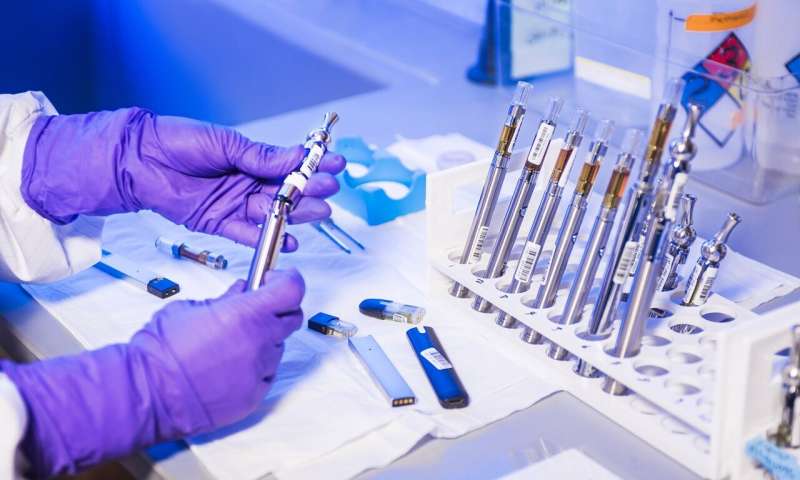

Known for their appetizing flavors, such as bubblegum, banana and strawberry, e-cigarettes continue to grow in popularity around the world. Promoted by makers as a “healthy” alternative to regular tobacco cigarettes, researchers are finding e-cigarettes, or vaping, still result in injury to the lungs.
In a recent study published in the American Journal of Physiology, teams at University of California San Diego School of Medicine, the Royal Adelaide Hospital and the University of Adelaide School of Medicine in Australia found that the flavoring chemicals of e-cigarette vapor alone can measurably damage the lungs, regardless of the presence of nicotine.
“Ninety-nine percent of e-cigarette liquids are flavored. To create these flavor profiles, companies are adding multiple chemicals to achieve that ‘perfect’ taste,” said Laura Crotty Alexander, MD, associate professor of medicine in the Division of Pulmonary, Critical Care and Sleep Medicine at UC San Diego School of Medicine and section chief of Pulmonary Critical Care at Veterans Affairs San Diego Healthcare System. “These chemicals have been found to be toxic to the lungs. When inhaled, they wreak havoc on the lungs and affect specialized protein levels that help keep the body’s immune system on track.”
Working with 21 different adults who regularly vaped, the team at UC San Diego found changes in certain inflammatory proteins known to cause disease. In each individual who used e-cigarettes, they discovered irregular protein levels within their saliva and airways compared to individuals who did not vape.
Scientists at University of Adelaide then used in vitro methodologies to observe how human airway cells reacted to vapor applied directly to them from 10 flavored liquids used in e-cigarettes. After exposure, they reported that all of the e-liquids damaged cells, with some flavors being more toxic than others.
Combined, the researchers said the data suggests people who use flavored e-cigarettes are damaging their lungs every time they vape. Among the most toxic: chemical profiles for some chocolate and banana flavors.
“Our study demonstrated to us that the name on the bottle is not what is important, it is what goes into the e-liquids and e-cigarettes that matters,” said first author Miranda Ween, Ph.D., senior postdoctoral researcher in the Lung Research Laboratory at the University of Adelaide and Royal Adelaide Hospital, Australia. “Lung cell toxicity and bacterial clearance by the lung’s alveolar macrophages was affected by almost every flavor. Chocolate in particular had an unexpectedly high impact, killing almost all the cells and blocking the ability of macrophages to clear away bacteria almost entirely.”
Alveolar macrophages initiate inflammatory responses when harmful organisms are detected in the body. Like street sweepers for the lungs, they are powerful immune cells that continuously devour inhaled bacteria and foreign matter entering the lungs.
“Alveolar macrophages are one of the most important immune cells in our lungs; they are designed to maintain the body’s homeostasis,” said Crotty Alexander. “These macrophages are the first cells to be exposed when a person inhales vapor. When the vapor is toxic, such as in e-cigarettes, these cells trigger an inflammatory response that disrupts the body’s homeostasis, resulting in disease and lung damage.”
Source: Read Full Article